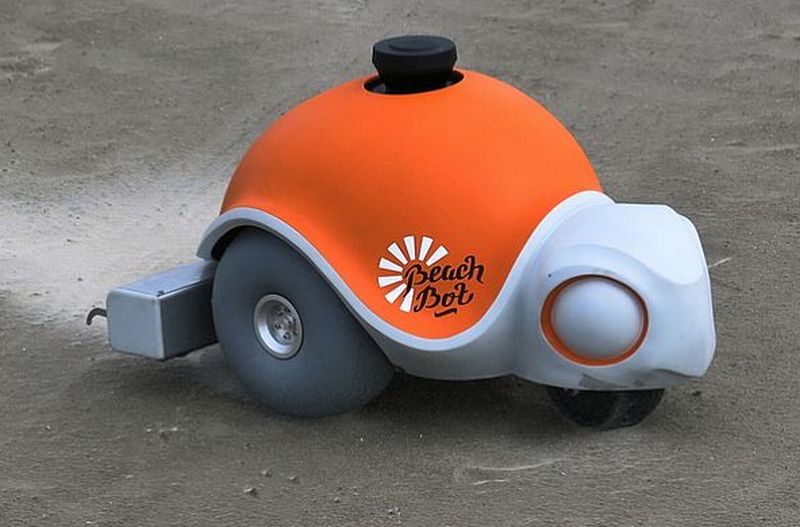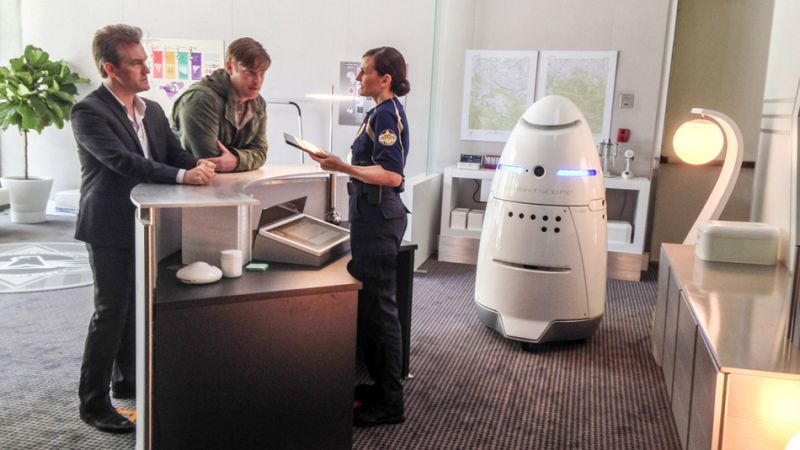Disney Research Zurich in collaboration with ETH Zurich have designed a robot called Beachbot that has the potential of carving impeccable huge sand drawings. Equipped with wi-fi computer, an inertial measurement unit (IMU) and laser scanner, the Beachbot walks effortlessly on sand making paintings. Laser scanner helps it to restrict its canvas boundaries within four poles mounted alongside the area. It also uses laser data and the IMU for its own location while it steers with millimeter accuracy inside the restricted area. Building rake mechanism that would compliment drawing tool…
Read MoreCategory: Robo Tonics
Sepios the Nautical Robot inspired by Cuttlefish: Biomimicry
The Swiss Federal Institute of Technology (ETH) in Zürich has come up with a robot, movement of which is inspired from cuttlefish. One of its own kind, Sepios is a bot with four orthogonal fins. Peep on the link below and see the undulating fin propulsion from the ETH’s nautical robot:
Read MoreSpeecys Hi-tech set of Karakuri Puppets: MF201 is Small and Agile Robot Figure
Japan has revolutionized their traditional karakuri puppets by embedding a set of servomotors within the plastics. Market of action figures is already booming in Japan, hence, the plastic model industry is going to be the next big thing in the country. Taking this into consideration, Speecys, a robotics company came up with their Motion Figure system, which they claim is pioneering the spirit of robotic action figures not only in the nation but also across the globe.
Read MoreBiomimicry: Robotic Spy Fish will do the Reconnaissance (ISR) Missions
Boston Engineering in collaboration with the U.S. Navy is developing a ‘tuna fish’, their new unmanned underwater vehicle. Developers envision that the fish would autonomously navigate across the sea for fetching information including surveillance and reconnaissance (ISR) missions. The project has been named Project Silent Nemo that comes from Disney’s famous movie, Finding Nemo, where Nemo was the subject of search but in here, Nemo will do the finding. Swimmer drone The unmanned underwater vehicle weighs around 100-pound while it’s length is about 5 feet. As a product of…
Read MorePepper selling Espresso Machines in Japan: Humanoid to collect Customers’ Opinions
George Clooney, the brand ambassador of Nespresso has a stiff competition now, I say stiff because the new face is cute, chatty & cuddly and it happens to be an android. Pepper is the name of the droid that Nestle has lately launched. It’s not just a single robot but a fleet to bots taking the Japanese stores. The four feet tall bot has a cute human like face mounted on top of a plastic body. The interface in tablet form is located at the chest of the machine while…
Read MoreThe Autonomous K5: A Bot for Predicting and Preventing Crime
Silicon Valley, the renowned center for invention and development, is always in news. Lately, Microsoft’s robo cop has been creating waves in the tech ocean of the Valley. Start-up, Knightscope has named its security robot K5. Makers of the robot using high tech robotics, predictive analytics and social engagement, wanted to use the bot in predicting and preventing crime. Till now, the company has designed seven robots and envisions positioning four more by the end of this year.
Read MoreRobots would now Learn to Fall from Cats and Divers: Biomimicry
It’s not just the design but the falling mechanics too are being studied for implementation by researchers in biomimicry. In an attempt to develop natural reflexes in robots, scientists at the US are studying the techniques through which cats and athletes twist their body mid-air without being injured at the landing. By recreating the similar reflexes in droids, researchers aim to cut down the probability of robots crashing especially during hazardous missions like search-and-rescue operations.
Read MoreBiomimicry: Cyborg Cockroach would be the New Rescuers
Cockroaches are one organism that is disliked by a majority of people but these creepy looking creatures is soon going to help in tracing humans trapped in disaster sites. Similar to penny sized micro robots, these tiny roaches can make its way through the extremely small spaces where others like dogs, camera or robots might not reach thus making rescue operation slow and risking lives of people.
Read MorePIBOT will be the next Flying Captain: Humanoid Learns to Fly Real Airplanes
Last week, we talked about NAO, the humanoid learning to steer wheels and now we have a similar humanoid that is learning to fly real planes. PIBOT is the name of the small and affordable humanoid that is ready to take off our expectations into the skies. PIBOT has been fabricated to operate a toned down, simulated aircraft cockpit. The intelligent synthetic creature is able to make out and use the entire controls comprising of buttons and switches present in the cockpit of a light aircraft that is especially designed…
Read MoreGoCart, the Food Delivery Bot: Service Robot for Elderly and Health Care Industry
Slowly and steadily, robots are replacing labor in nearly all sectors some envision it as a threat while others think that it will make the human lives more convenient. There is no doubt that these machines would directly improve productivity and efficiency especially in service sector. Thinking on the same lines, manufactures are working across nations in developing service-oriented bots, first came James the Barman, followed by SaviOne the butler bot and now South Korea-based Yujin Robot has come up with GoCart, a meal-transport machine especially designed to function in…
Read MoreNAO will Drive its Own BMW Sports Car: Humanoid Learns to Steer
Autonomous vehicles are the machines capable of steering by itself, a concept that we are still trying to converge on the line of safety of passengers. Now what if an external machine comes and steer away a vehicle that is designed for humans? Robots LAB, San Francisco based distributor of educational robots, have led to the creation of this imagination, they have come forward with a tiny tot humanoid Nao along with a BMW Z4 Electric sports car. Nao is capable of steering the car independently. The vehicle is equipped…
Read MoreSaviOne the Butler Bot: Service Robot for Hospitality Industry
Last year we talked about James, the new Barman and now we would be witnessing a robot butler developed by Savioke (pronounced “savvy oak”) entering the hospitality industry to maximize customers’ experience. As of August 20, Savioke’s first delivery robot (Botlr) nicknamed as A.L.O by the hotel, will be seen operating in hotel Aloft in Cupertino, California. In its pilot program, ROS powered autonomous robot, Botlr will be assisting hotel staff in delivering amenities such as mobile charger, towels, brush or even snacks, to the guest’s room and thus saving…
Read MoreDamaged Robot learns to Hobble Quickly: Coping with Limb Loss
Last year, a set of researchers at the Sorbonne University, Paris created a hexapod that was able to figure out how to walk even after one of its legs was malfunctioned, just like animals do. The robot was very much dependent on an experimental discovery to carry out the best gait to surmount the caused damaged. This meant that it analyzed then entire stuff that has been programmed into it to figure out the best possible way. Although, this worked fine but it consumed nearly 20 minutes every time it…
Read MoreBaxter Research Robot: Ideal Platform for Collaborative Robotics
Baxter Research Robot is an interesting and affordable concept for the corporate and academic robotics research across the world. It would help teaching fifth graders how to code on a real robo machine. Targeted towards academic and corporate R&D departments, it would assist in human-robot interaction and collaborative robotics to the next level. Safe and reliable hardware platform The humanoid robot platform is worth $25,000 (USD). It consists of two 7-axis arms, embedded cameras, sonar, torque based sensors and direct programming access through standard Robot Operating System interface. It makes…
Read MoreSkeletal Muscle Cell Powered Bio-Bots: Micro-Bots controlled by an Electric Field
Inspired from living organisms, researchers try to create robots that can simulate living creatures mechanically or chemically. This field of science is named as Biorobotics. A team of researchers at the University of Illinois at Urbana-Campaign has made a miniature walking bio-bots that derive its power from living muscle cells. And their movement can be regulated externally using electrical pulses.
Read More














